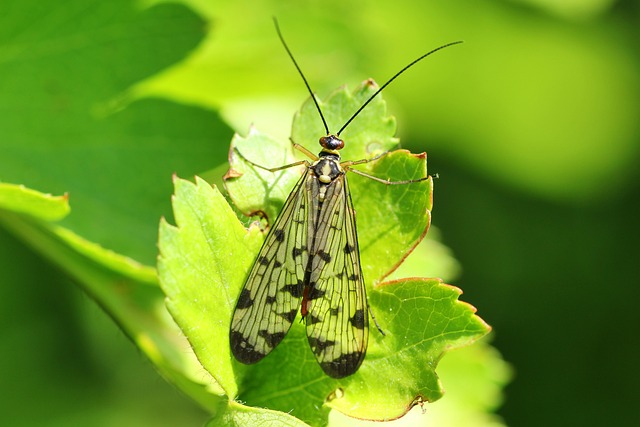Professional scorpion removal experts leverage their deep understanding of scorpion ecology and behavior to implement effective, safe strategies worldwide. They identify local species, predict habits, and tailor solutions from prevention (sealing entry points) to post-removal protocols (cleaning, inspections). Using specialized tools and methods, these professionals protect human safety while maintaining ecological balance through strict decontamination and responsible disposal practices. Knowledge of species like the black-tailed and bark scorpions enables targeted approaches for diverse settings, ensuring a safer environment for both humans and wildlife.
In the realm of pest control, professional scorpion removal is a specialized art demanding thorough understanding. Scorpions, with their intricate behaviors and unique habitats, pose distinct challenges. This article guides professionals through the essentials of scorpion ecology, identifying prevalent species and their habits, and offers robust prevention strategies. We delve into safe removal techniques, ensuring both efficiency and minimal risk. By mastering these skills, professionals can effectively manage scorpion populations, providing clients with lasting relief from these pesky creatures, enhancing their services in the process.
Understanding Scorpion Ecology and Habitat
Scorpions, intricate creatures of the arachnid family, thrive in diverse ecosystems worldwide, each with unique ecological niches. Understanding their habitat and behavior is pivotal for professionals in scorpion removal services. These reptiles are well-adapted to arid and semi-arid regions, preferring warm, dry environments like deserts and rocky areas. They actively hunt at night, utilizing their keen vision and chemical sensors to detect prey. Knowledge of these ecological factors enables experts to employ targeted strategies for scorpion control and prevention.
Specialized training in professional scorpion removal equips individuals with the skills to identify habitats, recognize behavior patterns, and implement safe, effective solutions. This expertise is crucial for mitigating risks associated with scorpions in residential or commercial spaces, ensuring both human safety and minimizing environmental impact. By delving into these ecological insights, professionals can navigate the complex world of scorpion behavior, offering tailored services that address specific needs.
Identifying Common Scorpion Species and Their Behaviors
In the realm of professional scorpion removal, understanding local species is key. With over 1,500 known species worldwide, ranging from harmless to highly venomous, identifying common scorpions and their behaviors is crucial for effective prevention and control. For instance, in arid regions like the southwestern United States, the black-tailed scorpion (Androctonus australis) stands out due to its large size and powerful sting. This species tends to avoid humans unless provoked or trapped, making understanding its habitat preferences vital for professionals.
Another prominent species is the bark scorpion (Centruroides imitator), known for its aggressive behavior and ability to burrow under rocks and logs. Unlike some scorpions that are primarily nocturnal, this species is active during both day and night, which necessitates tailored removal strategies. For professionals, knowing these behaviors allows for the implementation of targeted prevention measures, such as sealing entry points, using appropriate pesticides, and educating communities on safe practices to minimize scorpion infestations.
Effective Scorpion Prevention Strategies for Professionals
Scorpion prevention strategies tailored for professionals play a crucial role in mitigating risks associated with these arachnids. Experts engaged in pest control or wildlife management should be well-versed in understanding scorpion habitats, behaviors, and unique characteristics to implement effective countermeasures. One key strategy involves identifying and sealing entry points, as scorpions can infiltrate buildings through tiny crevices. Regular inspections are essential to pinpoint potential nesting sites or hiding places.
Professionals should also utilize appropriate tools and methods for scorpion removal. This includes the use of specialized equipment for safe capture and handling, ensuring both human safety and animal welfare. Additionally, developing and enforcing strict protocols for decontaminating areas post-removal helps prevent reinfestation. Educating clients or affected communities about these prevention measures is equally vital, fostering a collaborative approach to scorpion control.
Safe Scorpion Removal Techniques and Post-Removal Procedures
When it comes to ensuring a safe and effective scorpion removal, professionals employ specialized techniques designed to minimize risks both for the handlers and the environment. This involves understanding the unique behaviors and habitats of different scorpion species, as well as utilizing appropriate tools and protective gear. For instance, trained experts might use long-handled brushes and vacuums to gently dislodge scorpions from their hiding places, avoiding direct contact and reducing the potential for stings.
Once a scorpion is removed, post-removal procedures are crucial to prevent reintroduction or further infestation. This includes thoroughly cleaning the area with disinfectant solutions, sealing entry points, and implementing preventive measures such as regular inspections and exclusion strategies. Additionally, proper disposal methods ensure that scorpions do not end up in nearby habitats, maintaining ecological balance and promoting a safer environment for both humans and wildlife.
Professionals involved in scorpion control must prioritize ongoing education to stay abreast of the latest research on scorpion behavior. By understanding ecology, species-specific behaviors, and effective prevention strategies, experts can ensure safe and humane scorpion removal, contributing to public safety and environmental conservation. This specialized knowledge is key to successful professional scorpion removal services.
